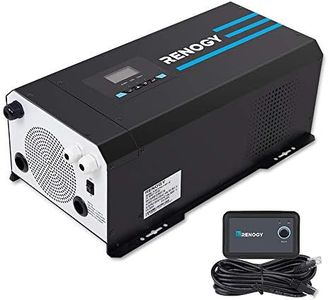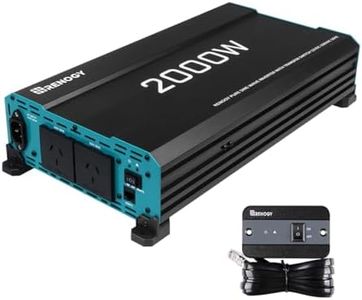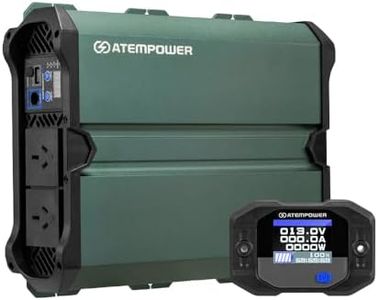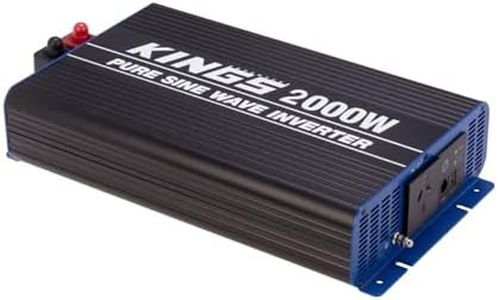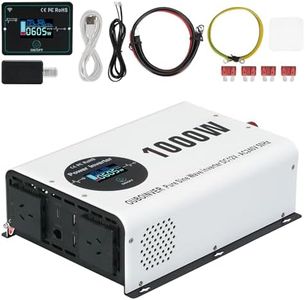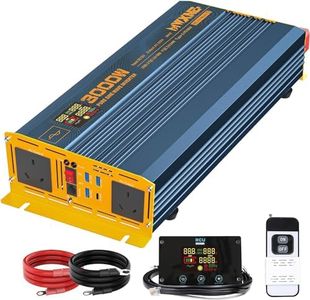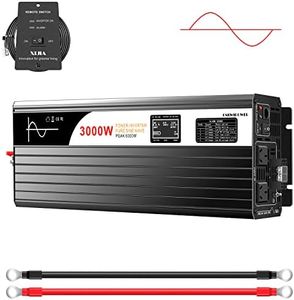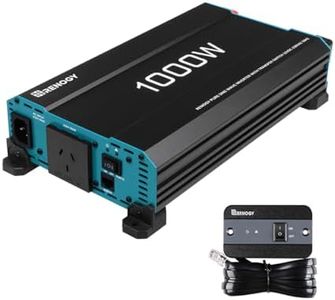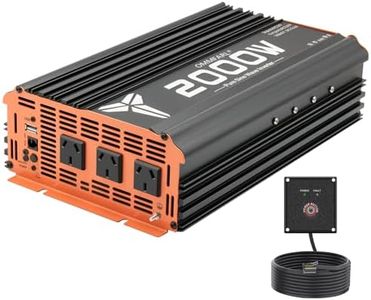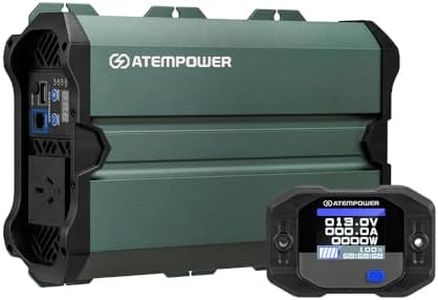We Use CookiesWe use cookies to enhance the security, performance,
functionality and for analytical and promotional activities. By continuing to browse this site you
are agreeing to our privacy policy
10 Best Pure Sine Wave Inverters
From leading brands and best sellers available on the web.Buying Guide for the Best Pure Sine Wave Inverters
When shopping for a pure sine wave inverter, it's important to understand how these devices work and why they matter. Pure sine wave inverters convert DC power (typically from a battery or solar panel) into AC power that is almost identical to the electricity from your home outlets. This makes them ideal for powering sensitive electronics, appliances, and devices that need a steady and clean power supply. Selecting the right inverter involves looking at several key specifications and matching them to the devices and applications you intend to use.Output Power (Wattage)Output power, measured in watts, indicates how much electrical load the inverter can handle at a time. This is crucial because every device you plan to connect will consume a certain amount of power. Inverters come in a wide range of capacities – small ones (under 500W) are suitable for basic electronics like phones or small lights, medium ones (500W to 1500W) work well for household appliances like laptops, TVs, and small kitchen gadgets, and large ones (over 1500W) are built for heavy-duty appliances or powering multiple devices simultaneously. To choose the right size, list all the devices you expect to use at once, add up their wattage, and choose an inverter with a capacity at least 20–30% higher to allow for surges or unexpected needs.
Waveform Quality (Pure Sine vs. Modified Sine Wave)Waveform quality describes the shape of the electrical signal the inverter produces. Pure sine wave inverters create a smooth, clean waveform very similar to the electricity you get from the power grid, while cheaper modified sine wave inverters create a rougher signal. The smoothness matters because sensitive electronics (like medical equipment, audio devices, or modern appliances with digital controls) work best and last longer with pure sine wave power. If you plan to use such devices, always opt for a pure sine wave inverter; for simple tools or resistive loads like basic light bulbs, waveform quality may not be as critical.
Input VoltageInput voltage is the type of DC power the inverter can accept, often matching standard battery voltages like 12V, 24V, or 48V. This spec is important because your inverter needs to be compatible with your power source. Smaller setups, like car or RV systems, usually run on 12V, while larger solar or battery banks may use 24V or 48V for greater efficiency. Ensure your inverter's input voltage matches your battery bank to avoid damage and get the best performance.
EfficiencyEfficiency refers to how well the inverter converts DC to AC power, usually given as a percentage. Higher efficiency means less energy is wasted as heat, leaving more usable power for your devices. Typical pure sine wave inverters have efficiencies in the range of 85–95%. A more efficient inverter reduces strain on your batteries and can save you money and energy in the long run. If you rely on limited battery power, look for models on the higher end of the efficiency scale.
Surge CapacitySurge capacity, sometimes called peak power, is the highest wattage the inverter can provide for a short period (usually a few seconds). This is important because many appliances, such as refrigerators or power tools, draw extra power when first turned on. For example, an appliance may normally use 500W but require 1000W at startup. Make sure the inverter's surge capacity is sufficient for your most demanding devices to prevent overloads or shutdowns.
Safety FeaturesSafety features may include protections for overload, over-temperature, short circuit, low or high voltage, and sometimes even cooling fans. These features help keep your devices, inverter, and battery safe if something goes wrong or if the loads get too high. Consider what devices you'll be running and where your setup will be located; comprehensive safety features offer peace of mind, especially in situations where the inverter will run unattended or power sensitive equipment.
